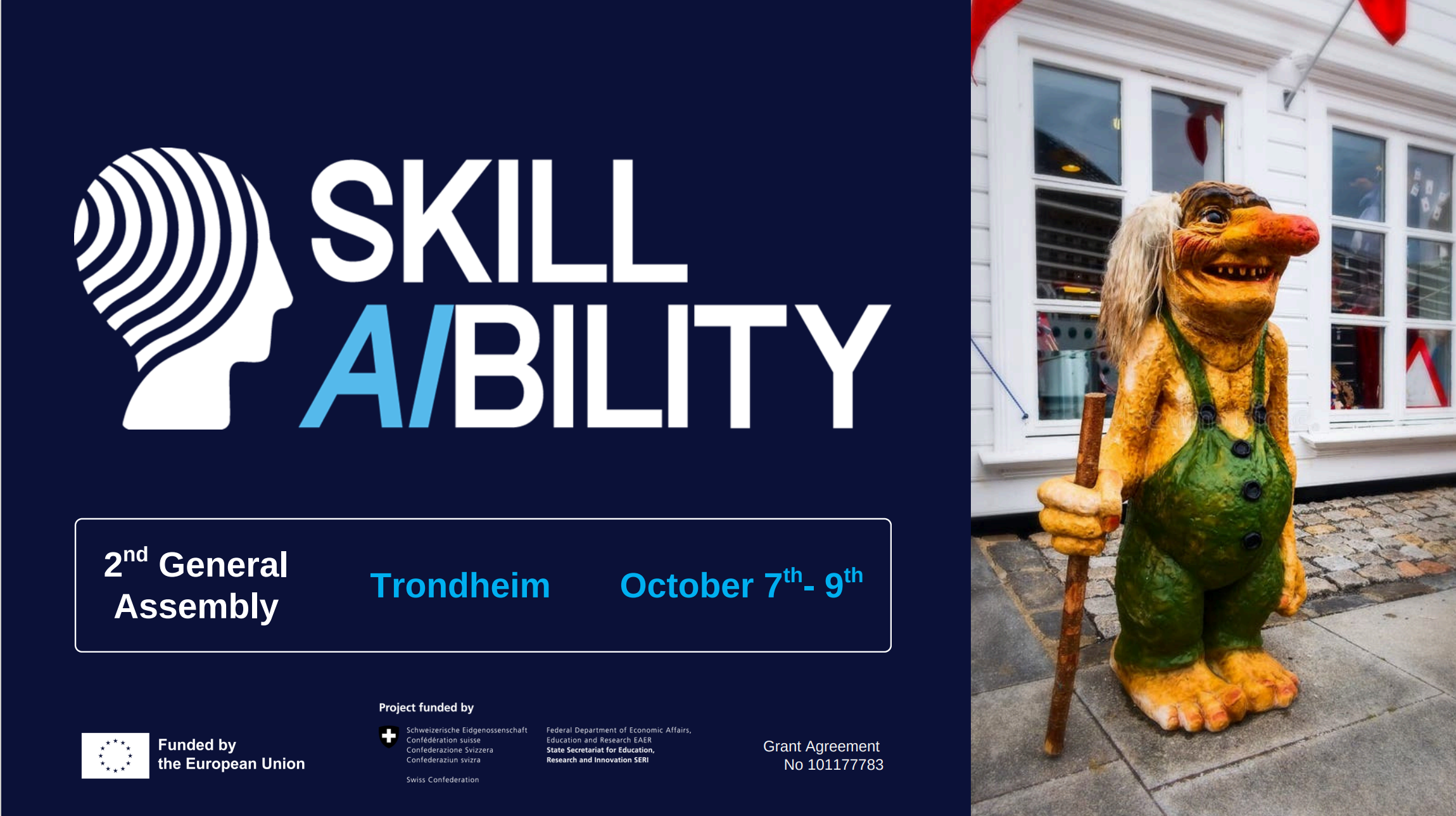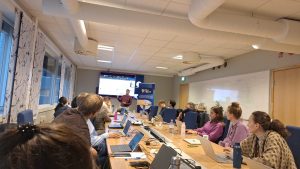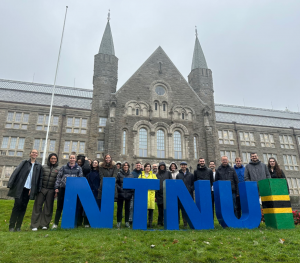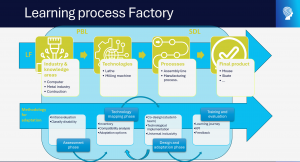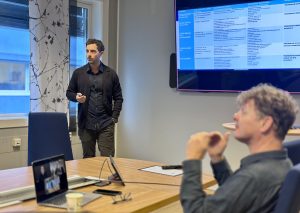SkillAIbility General Assembly in Trondheim
This post is also available in the following languages: Euskara, Español
The SkillAIbility consortium gathered in Trondheim, Norway, for its second General Assembly, hosted by SINTEF and the Norwegian University of Science and Technology (NTNU). Over three days, partners from across Europe participated in workshops, presentations, and discussions focused on advancing human-centric approaches to AI and manufacturing, in line with the Industry 5.0 vision — “What can technology do for humans?”
During the meeting there were different workshops. Lead by Chalmers University of Technology, we explored how manufacturing systems can better respond to human needs. Through collaborative sessions, participants worked on matching human factors with digital technologies, identifying skill gaps, and designing inclusive solutions for different user groups.
The University of Groningen (RUG) followed with a workshop dedicated to the design of inclusive learning factory use cases, showing how AI-assisted training can support diverse learners, including low-skilled workers, older employees, and individuals with disabilities. The discussions reinforced that technology should adapt to humans, not the other way around.
The final day, organized by SINTEF, focused on designing AI technologies that serve people. As part of Work Package 5, Zacharoula Papamitsiou and Patrick Mikalef guided participants through the Echelonized Design Science Research (eDSR) methodology, which helps define problems, translate them into design objectives, and evaluate inclusiveness and usability in human-AI interactions.
Tknika’s Contribution – Leading Work Package 4
A part of the General Assembly focused on Work Package 4: Human-Tech Training Design, led by Tknika. Ion Hernández, representing Tknika, presented the progress of this work package on October 7th, outlining how the team is developing a methodology to adapt Learning Factories towards human-centric principles.
The goal of WP4 is to design training environments that bring education and industry closer together — bridging the gap between vocational training and real manufacturing contexts. The work emphasizes empowerment, participation, and human-technology collaboration, while also integrating digital tools such as AI, VR/AR, and collaborative robotics (cobots).
Tknika’s tasks include:
- Developing a methodology for Human-Centric Learning Factories that incorporates key performance indicators (KPIs) to evaluate skills and inclusiveness.
- Leading the design of training methodologies for vocational education and training (VET), ensuring they reflect Industry 5.0 values.
- Creating guidelines for trainers and recommendations for curriculum updates to better integrate emerging technologies and inclusive teaching approaches.
Ion Hernández also shared Tknika’s work based on Problem-Based Learning (PBL) and Self-Directed Learning (SDL), complemented by Bloom’s Taxonomy and the SMART principle for measurable learning outcomes. In this way learners not only acquire technical knowledge but also develop transversal and inclusive skills relevant for the evolving manufacturing landscape.
Each session of the General Assembly reinforced SkillAIbility’s shared vision: that future manufacturing systems should place people at the center, enabling effective collaboration between humans and intelligent technologies.
The consortium expressed its gratitude to NTNU for hosting the meeting and providing an excellent environment for collaboration. The event marked an important milestone in SkillAIbility’s mission to promote human-centric, inclusive, and sustainable innovation in Europe’s manufacturing and vocational training systems.


